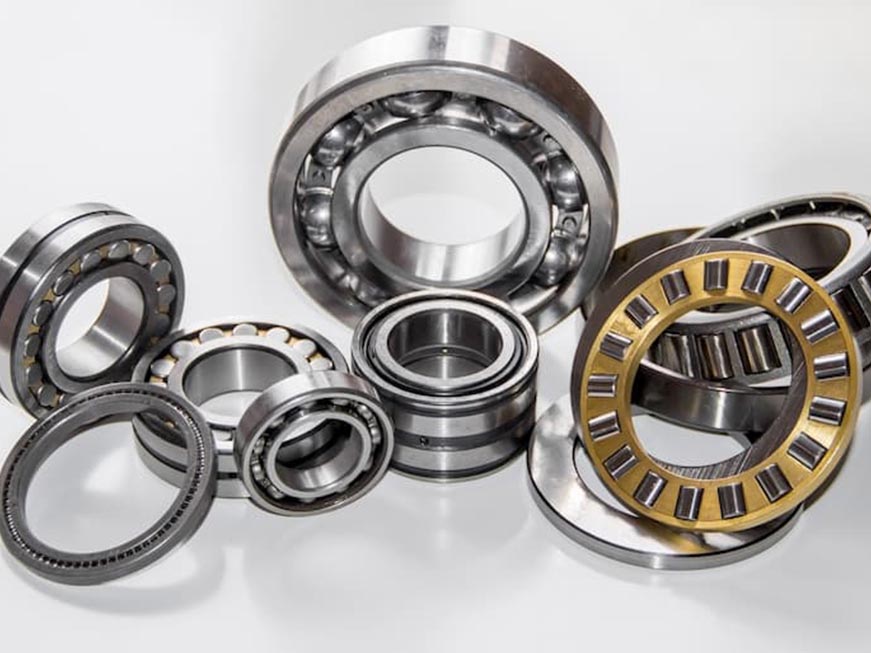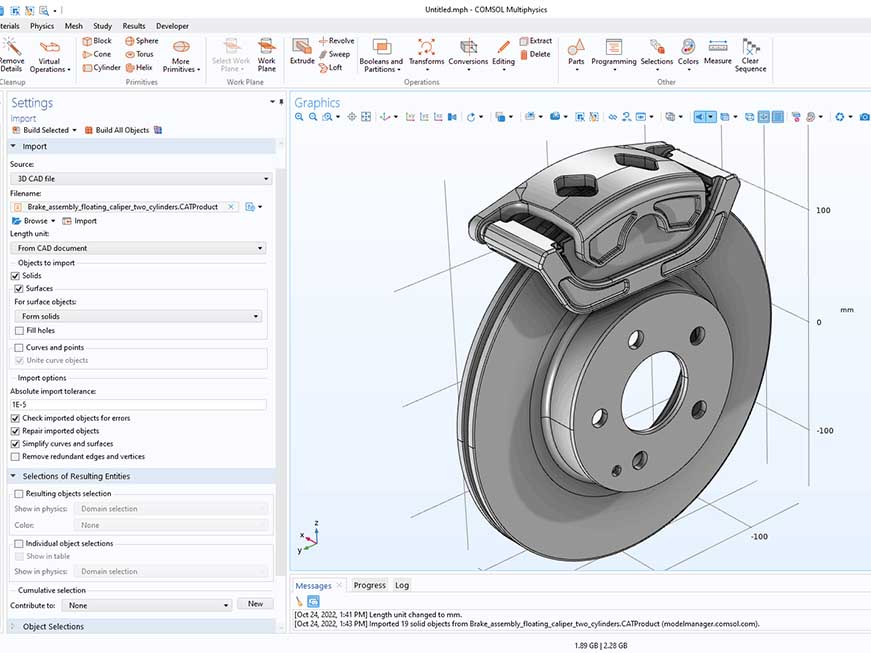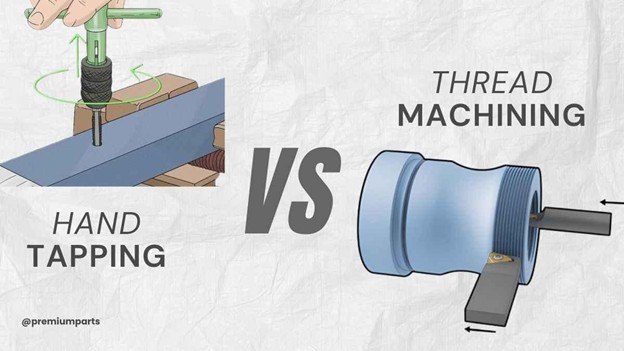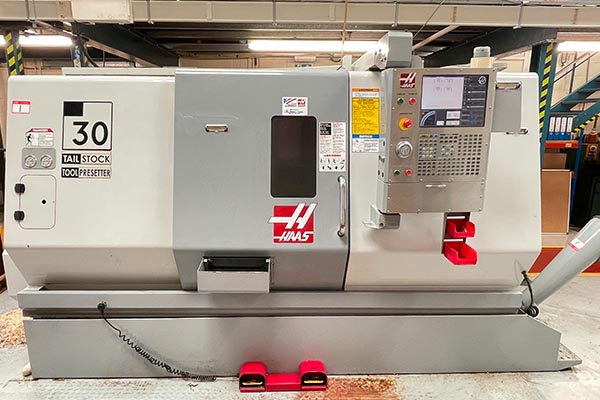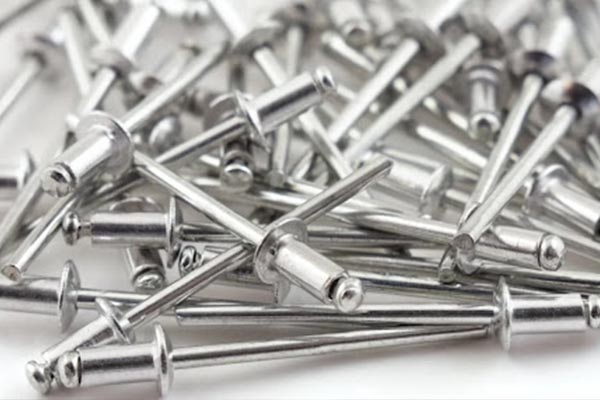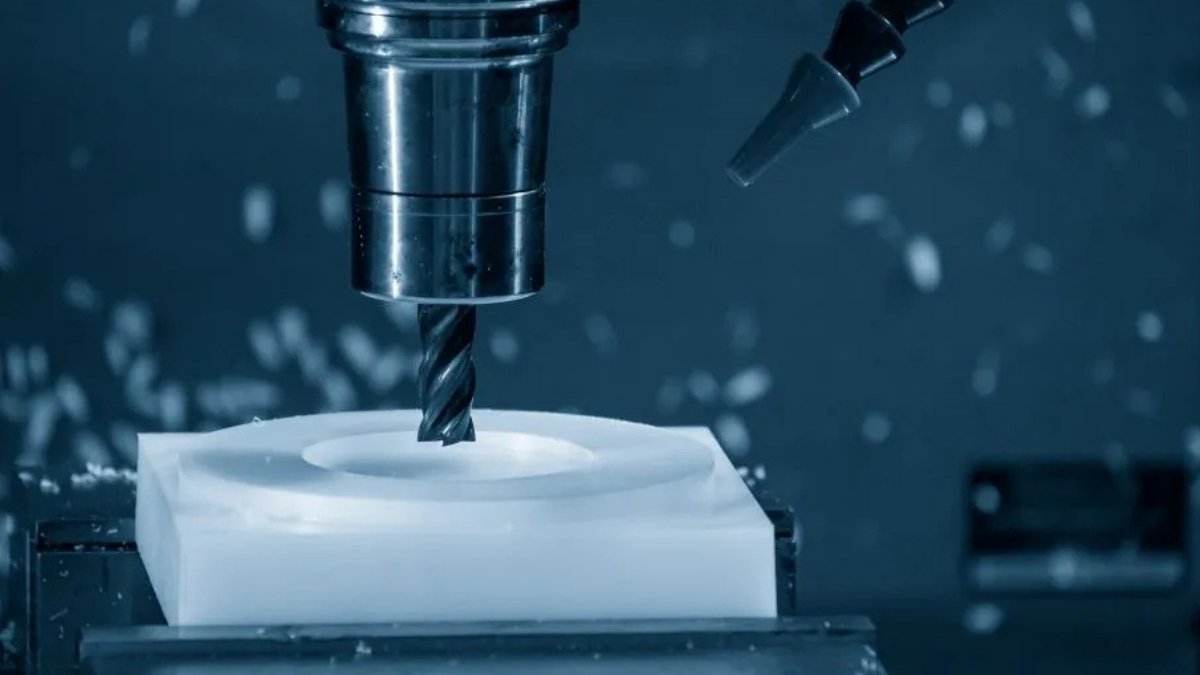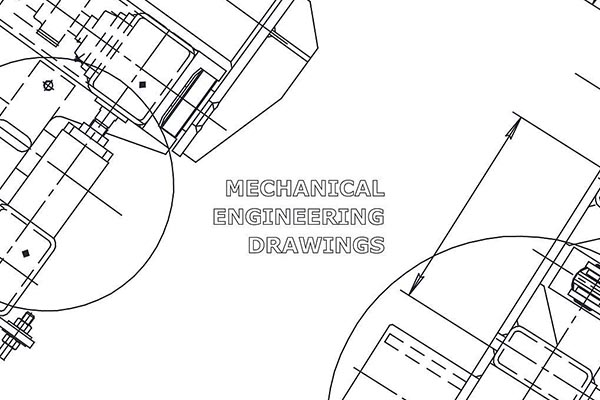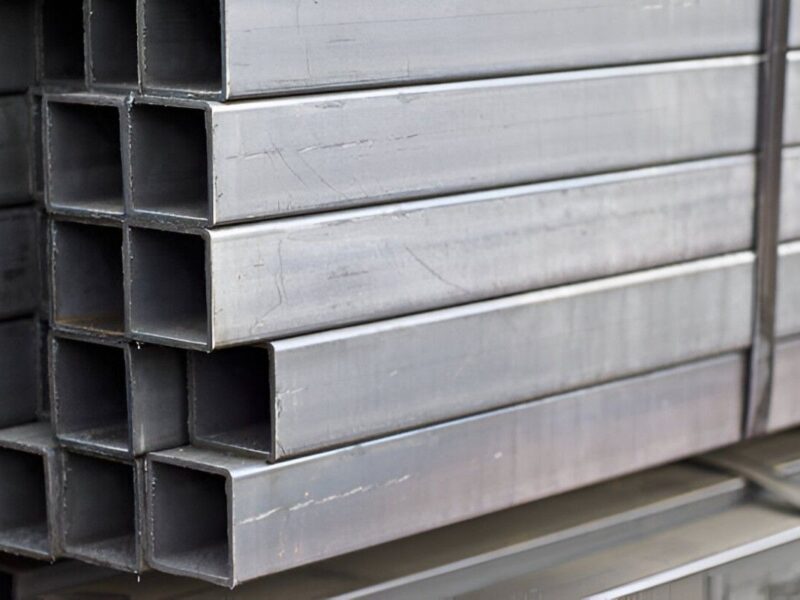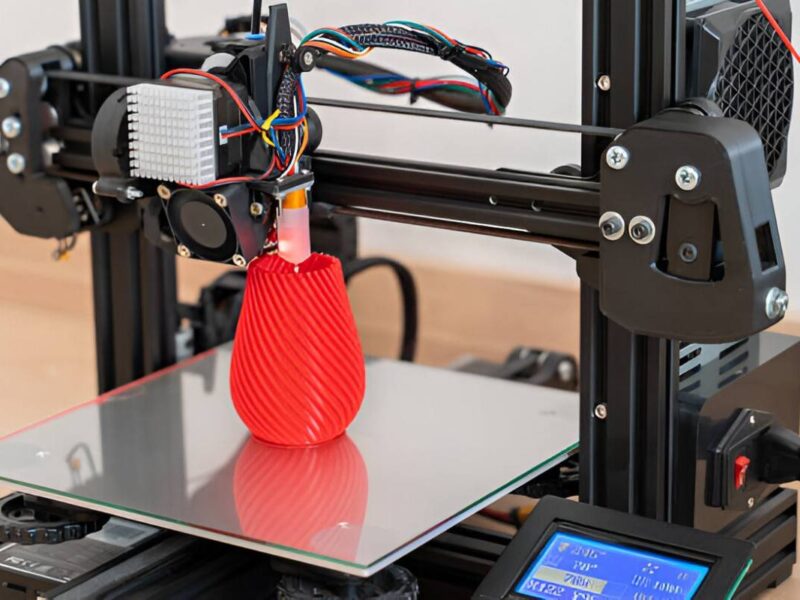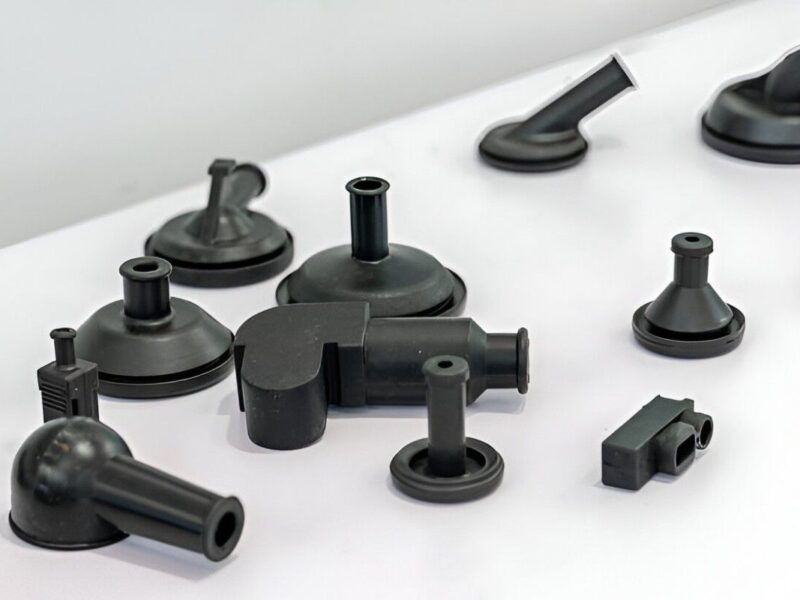Many industries and machinery depend on bearings, from huge power plants to everyday appliances. This circular equipment can rotate, and its motions define the functionality of many machines. For example, consider cars; how do their wheels rotate? They need a special system controlling them from behind: the bearings. Therefore, from automobiles to aerospace and sports equipment, all rely on the power of bearings. They come in different shapes, sizes, and designs to ensure proper functionality and movements in different directions.
Bearings reduce friction and ensure proper motion in machinery. They allow smooth rotation in a particular direction. Thus, choosing the correct bearing is essential to maintain the proper position of the shaft. Moreover, let’s discuss some significant types of bearings, their functionality, and features. Besides, we will also learn in-depth considerations for choosing the right one. Let’s dive in.
What are Bearings?
Bearings are the components of machinery existing in different forms and shapes. You can define them as a special part of machinery supporting a special type of motion and precise direction. Just take a sliding door as an example; you can’t lift it, and you also can’t remove it, but it only slides in a particular direction. That’s the doing of bearings. They come in different shapes and sizes. Their primary purpose is to reduce the friction between two moving parts. Moreover, they also prevent the wear and tear of the parts and heat generation, helping to enhance durability.
What’s the Purpose of Mechanical Bearings?
The primary function of bearings is to reduce friction between two moving/rotating machinery parts. FrictionFriction can cause wear and tear, reducing machinery’s durability, and bearings help eradicate it. Thus, bearings between such parts can help ensure smooth motion and avoid direct connection. Their impressive functionality is the structure of rolling elements between them. The rolling elements come in various sizes, such as radial, axial, and a blend of both.
Types of Bearings and Their Characteristics
There are different types of bearings, each with different functionality and characteristics. Some have rolling elements, some are plain, while few are magnetic and fluid bearing. Here’s a detailed overview of characteristics:
Type 1: Ball Bearings
Ball bearings are circular with rolling elements inside them, like spherical balls. They are one of the most significant types of bearings and have a wide range of applications. The spherical balls are present between two metal pieces (races) featuring an annulus shape. The inner metal piece can rotate freely; however, the outer one is fixed to hold the spherical balls and inner race. They usually feature stainless steel of 4401 and 14401.
Ball bearings’ major functionality is offering low friction and enhancing rotational motion control. However, one major drawback is their minimum load capacity. Thus, they are usually used in small to medium machines such as electric motors.
Advantages of ball bearings:
- Reduce friction
- Protect from wear and tear
- No and minimum need for lubricants
- Low energy consumption
- Enhance durability
- Replacements available
- Affordable
Moreover, these bearings can handle the thrust loads. However, with advantages, there are some cons as well. They can break due to shocks, but high-quality ball bearings can survive. They produce noise and cannot handle larger weights. There are many other ball-bearing types, each with a different fua functionality. Let’s explore them consequently:
Deep Groove Ball Bearings
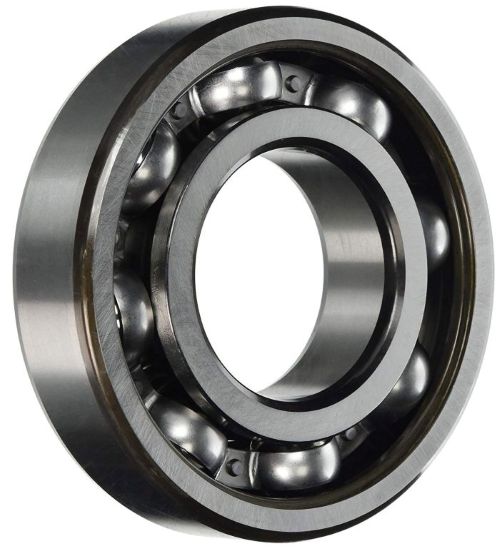
Deep Groove Ball Bearings
Image Description: A detailed close-up of a deep groove ball bearing. It shows its inner and outer rings, steel balls.
As the name suggests, deep groove ball bearings have a deeper furrow to hold the spherical balls. The balls stay in place by the outer races and inner races, offering rotational motion. Unlike common bearings, they produce less noise and offer low friction. Therefore, they are ideal for high-speed machinery such as electric motors, gearboxes, and water pumps.
They can handle heavy loads, and their compact design takes up minimum space in machinery. Besides, you can easily install them, but with care to prevent dents on races. It’s best to use them for high-speed machinery.
Self-Aligning Ball Bearings
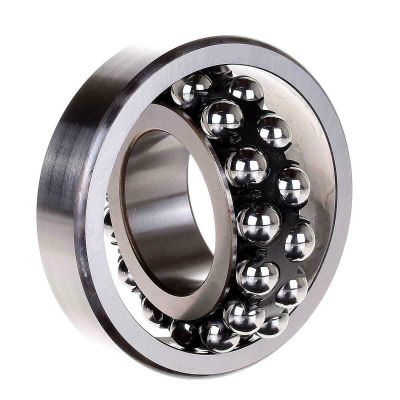
Self-aligning Ball Bearings
Image Description: A close-up of a self-aligning ball bearing. It showcases its two rows of balls and inner race that allow it to adjust to misalignment.
This type of ball bearing features a special structure that helps to align the spherical balls in the correct position. Even if they are subject to dynamic misalignment, this type of bearing is immune to it. The bearings can be readjusted. Thus, their major advantage is that they can correct any misalignment and offer precise functionality. Moreover, they are best suited to absorb shocks and work well under pressure.
Nonetheless, with functionality enhancements, cost also increases. They are a little costly and have minimal load capacity. Their best use is in machinery that is subject to high vibrations and shocks for seamless operations.
Angular Contact Ball Bearing
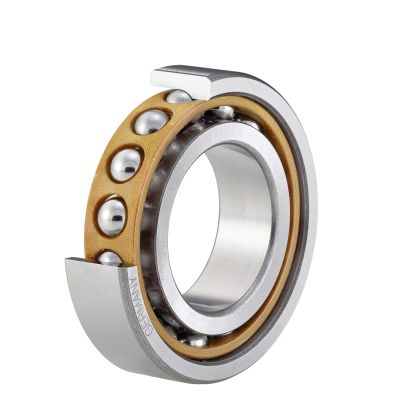
Angular Contact Ball Bearing
Image Description: A close-up of an angular contact ball bearing. It showcases its single row of balls and the angle at which the balls contact the inner and outer races. These are designed for handling both radial and axial loads.
In this unique type of ball bearings, the inner and outer metal pieces are adjacent at a specific angle. Thus, the balls transfer pressure in an inward direction because of the displacement of races. Therefore, they can handle larger weights and are subject to work well even in high-speed operations. Their primary applications are in agricultural equipment, automobiles, water pumps, and other high-speed machinery, including CNC machines.
Thrust Ball Bearing

Thrust Ball Bearing
Image Description: A close-up of a couple of thrust ball bearings. These depict the ball and race assembly designed to handle axial loads.
These ball bearings are cost-effective and offer maximum functionality for axial loads. However, they cannot handle radial loads and are available in single and double directions. Thrust ball bearings make low noise and offer smooth operations for high-speed machinery.
The choice of single and double ball bearings depends upon the direction: unidirectional or bidirectional. Moreover, they are easy to install and readily available at low cost. These bearings are used primarily in machinery like spindles and crane hooks.
Miniature and Thin-section bearings
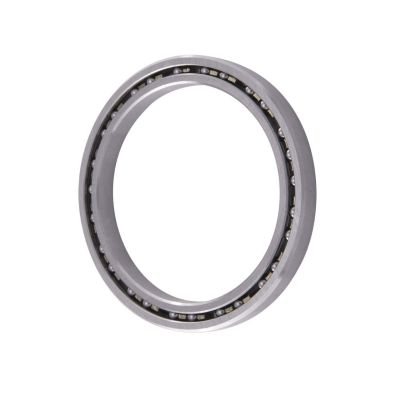
Miniature & thin-section bearing
Image Description: A close-up of a miniature and thin-section bearing. It emphasizes its compact size and slim profile.
These miniature bearings offer precise load handling. They are best for small machinery and often feature a maximum diameter of 20mm. Their small dimensions make them ideal for use in electronics and medical equipment. Moreover, they produce less noise and are best for precise applications.
Thin-section bearings, on the other hand, contain a thin layer of races surrounding small rolling balls. With less weight, they offer accurate and frictionless operations. However, they are usually subjected to misalignment. Their major use is in defense, aerospace, and electronics.
Type 2: Fluid Bearings
The fluid bearings have a thin layer of fluid, air, or gas between the races or rotatory surfaces. In fluid bearings, the moving parts do not contact each other as the fluid can handle the loads efficiently. This results in smooth motion and high-speed operations. The fluid is added to the bearings with memorable holes and channels. They have two major types:
1. Hydrostatic Bearings: They include pressurized fluid, which reduces friction and maintains high-speed motion. However, external pressure is needed to maintain the pace. Besides, gap control is also necessary. They can handle heavy loads and offer durability. They are precise in motion and delivery. Hydrostatic Bearing
Hydrostatic Bearing
Image Description: A close-up of a hydrostatic bearing, showing its design that uses a pressurized fluid to support the load.
2. Hydrodynamic Bearings: Hydrodynamic bearings have a unique portion of the shaft that remains inside the cage called a journal. The journal helps them support the load and offer less friction. However, the usability of this bearing depends upon the rotation speed, thickness of fluid, and alignment.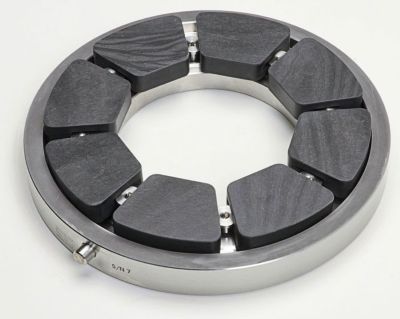
Hydrodynamic bearing
Image Description: A close-up of a hydrodynamic bearing. It showcases its design that relies on the motion of a lubricating fluid.
Type 3: Roller Bearings
Roller bearings are one of the most sought-after types of bearings. They have cylindrical elements instead of balls. There are no balls between races but cylindrical elements with lengths longer than their diameters. They come in contact with the inner and outer races, enabling them to bear heavy loads. The cylindrical rollers’ rolling movement carries the shaft’s actual load. Their primary features are:
- Easy to maintain and regulate
- Offers less friction
- Have the capability to bear heavy loads
- It can also bear axial loads
- Precise processing
- Fewer vibrations offer alignment
In addition to the above specs, they also have disadvantages, such as being noisy and expensive. They also come in different types in terms of features and functionality.
Tampered Roller Bearings
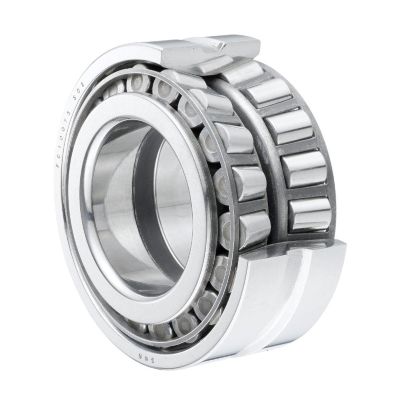
Tampered Roller Bearing
Image Description: A detailed view of a tapered roller bearing. It displays its inner and outer rings and the tapered rollers.
These roller bearings include an inner race of cone shape and an outer race (a cup) with rollers between them. The contact angle of the outer rim generally ranges from 10 to 30 degrees. These roller bearings can manage heavy axial and radial loads. Their design makes them take up less space with better functionality and stability. Moreover, they can also readjust in case of misalignment but come with higher prices. Their significant uses are in railway and mining systems.
Spherical Roller Bearings
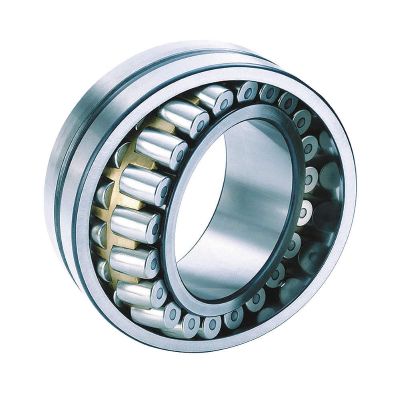
Spherical Roller Bearing
Image Description: A detailed view of a spherical roller bearing, highlighting its dual rows of rollers.
As the name suggests, their design includes spherical rollers placed in two rows with a separator between them. Although heavy loads are not easy to handle, spherical roller bearings can effortlessly handle them. They have a high load-carrying capacity and also can manage misalignment. Thus, although they are costly, they are more durable and need less maintenance.
However, these bearings are not best for high-speed functionality. Their major applications are in off-road vehicles, pumps, fans, turbines, and other heavy machinery.
Cylindrical Roller Bearings
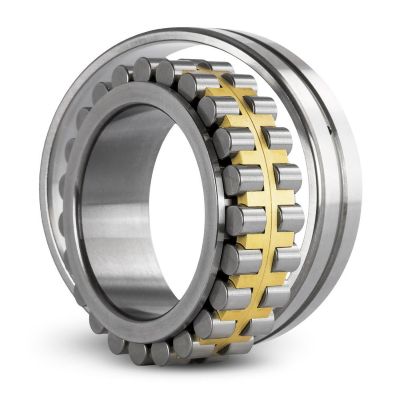
Cylindrical Roller Bearing
Image Description: A detailed view of a cylindrical roller bearing. It shows its cylindrical rollers designed for heavy radial loads.
The most common and straightforward type of bearings with cylindrical rollers between races. They can handle heavy weights efficiently and are prone to adjust during high-speed actions. Moreover, they reduce friction and have moderate axial load transmission. Besides that, they can carry high radial loads thanks to the linear connectivity between rollers and races.
They are available with different row options: single, double, and triple. Because they need less maintenance and have good functionality, they are best used in unreachable areas.
Needle Roller Bearings
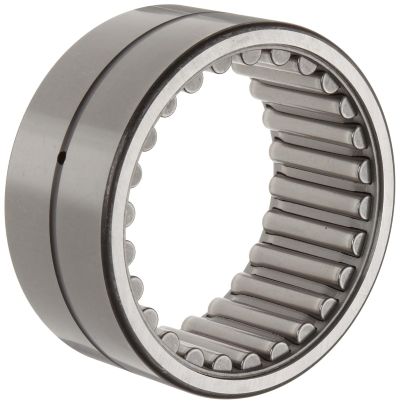
Needle Roller Bearing
Image Description: A detailed view of a needle roller bearing. It features long, thin cylindrical rollers.
Generally, they have the same structure and functionality as cylindrical roller bearings. However, the size of cylindrical rollers is different, as it includes needle bearings. Needle bearings have the same structure as cylinders; however, their size is tiny and longer. They are very slim and usually have a diameter of less than 6 mm. With minimum size and less weight, these needles allow high speed.
Therefore, these bearings are well suited to carrying heavy radial loads while offering compact space. Examples of their prominent usage include automobile transmissions and rocker arm pivots.
Thrust Roller Bearings
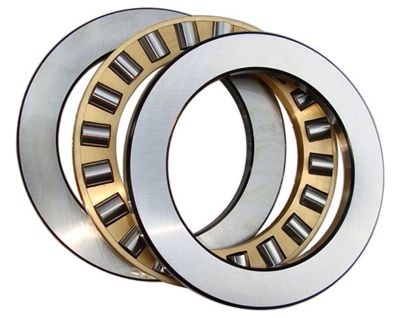
Thrust Roller Bearing
Image Description: A detailed view of a thrust roller bearing. It displays its design with rollers positioned to handle axial loads.
These bearings are similar to thrust ball bearings, but they have long rollers instead of balls. They can carry heavy axial loads and moderate radial loads. Moreover, they can readjust in case of misalignment. Similarly, they are best suited to operate even at high speeds and offer less friction. Their significant uses are in turbines and compressors.
Type 4: Plane Bearings
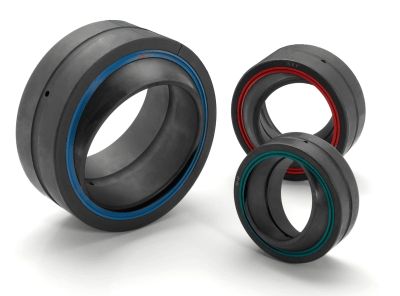
Plane Bearing
Image Description: A detailed view of a plain bearing, showing its simple design without rolling elements.
Plane bearings are the simplest type of bearings with no rolling balls or cylinders in them. They have cylindrical races and usually act as bushes. The bearing can handle heavy axial and radial loads. Moreover, it also lowers friction and also supports lubrication. Additionally, they have different types, from cylindrical to sliding plates. They can also include holes or tabs to reduce friction and offer better support. Their significant advantages include:
- Simple design and easy maintenance
- Offer smooth movement and less friction
- Can handle misalignment and support multi-directional movements
- Best for static and axial loads
- Primary uses are in agriculture, automotive, marine, and many other industries.
Type 5: Magnetic Bearings
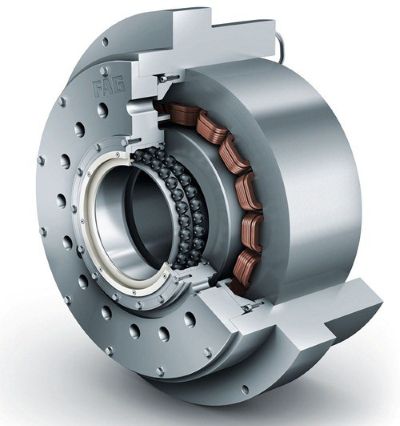
Magnetic Bearing
Image Description: A detailed view of a magnetic bearing. It demonstrates its design that uses magnetic fields to support and stabilize the rotating shaft.
Magnetic bearings are the most special type of bearings as they use electromagnetic force to rotate and suspend a rotor. They feature an electromagnetic field inside them, usually wires on ferrous material. After the magnetic field is activated, the force allows the rotor to perform precisely without contacting the outer surface. Thus, it can operate at high speeds and effortlessly carry heavy loads.
These bearings feature two major types: active magnetic bearings and passive magnetic bearings. Primarily, they are used in heavy industries, such as turbochargers.
How To Choose the Right Type of Bearing?
The selection of the right bearing should reflect your main priorities. The process is summarized below:
The least expensive option for bearings would be Plain Bearings if cost efficiency stands as your top priority. Plain bearings remain the most budget-friendly option yet they must receive regular lubrication throughout their use. Because they cause higher friction.
If your machine needs to run at high speeds, choose Ball Bearings. They reduce friction and handle fast rotations.
Roller Bearings can be selected when heavy loads need to be handled. These bearings distribute heavy loads effectively and also manage high radial forces.
Use Thrust Bearings to support primary forces running through the axis direction. These bearings have a purpose-built structure for supporting forces that act along the machine axis.
For shaft misalignment and deflection situations, choose Self-aligning Bearings. These bearings automatically adapt to minimal rotational irregularities.
Your application should use Ceramic or Stainless-steel Bearings when it needs to withstand harsh environmental conditions involving heat, and corrosion.
Sealed/Pre-lubricated Bearings work best for low-maintenance operations. These bearings need minimal maintenance while also preventing contaminants.
Summary
Bearings are essential components in significant machinery. From hardware, machines, and mechanical setups, their uses are limitless. Their primary purpose is to reduce friction and offer smooth rotational movements. Different types of bearings are available, from rotational to ball, roller, fluid, and magnetic. However, choosing the right one is crucial for better operations. You need to consider many factors and must know their materials. Want the correct bearing for your machinery? Premium Parts can help you find the best one. Contact us now for further guidance.
FAQs:
Q1: When to use ball bearings?
Ball bearings are primarily used for withstanding axial loads. They can’t manage heavy loads but are the best fast-moving machinery. They offer less friction with minimum resistance and durability.
Q2: What are some significant uses of bearings?
Bearings are significant parts of machinery and mechanical systems. They support rotating motion and reduce friction and noise. Their primary applications are in automotive, aerospace, industrial machinery, mining, and many other industries.
Q3: What considerations should we take when choosing the correct bearing?
When choosing bearings, it’s best to keep some considerations in mind. Firstly, consider the load capacity and speed of the machine you are going to use bearings for. Secondly, the rotational accuracy and operational environment also matter. You also need to check the precision, radial space, and bearing rigidity. Lastly, check the vibrational capacity of the bearing, as it can affect its performance.
Q4: What materials are used in bearings?
The best materials for bearings are chrome steel SAE 52100 and stainless steel AISI 440c, offering strength and corrosion resistance. Other than them, Babbitt metal, bronze, cast iron, aluminum alloys, and silver are also the best and have various advantages.


